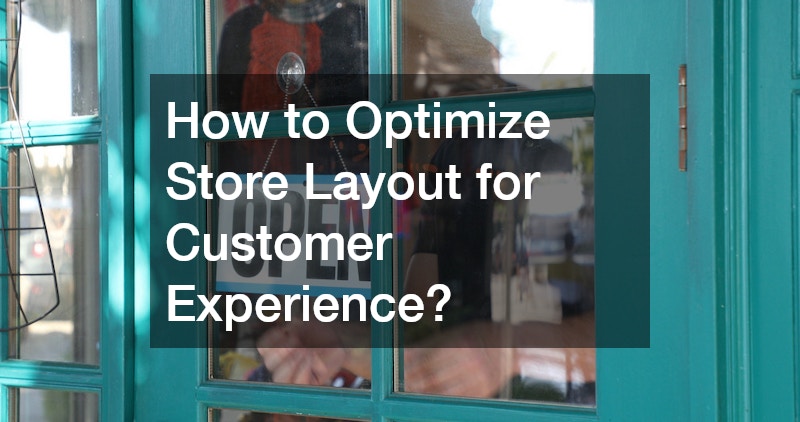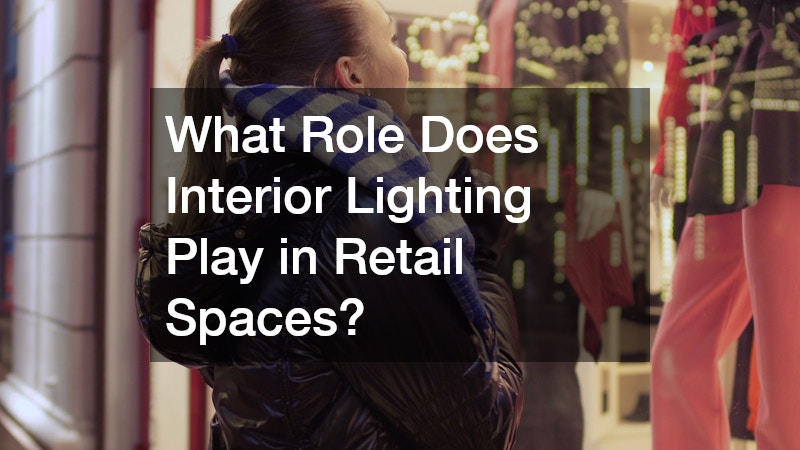
Understanding the critical elements of designing a small business storefront is essential for long-term success. The exterior and interior of your retail space send a message to potential customers before they even step inside. A thoughtfully designed storefront can attract foot traffic, enhance customer experience, and ultimately boost sales. From curb appeal to interior lighting, layout, and technology integration, each aspect plays a vital role in creating a space that reflects your brand and meets customer expectations. Additionally, working with experienced professionals in commercial design and build ensures that both aesthetic appeal and structural functionality are achieved. This guide explores the essential factors small business owners should consider when designing their storefronts.
What is the Impact of Curb Appeal on Business Success?

Understanding Curb Appeal
Curb appeal refers to the visual attractiveness of your storefront from the street. It encompasses the exterior design, landscaping, signage, and overall cleanliness of your business. First impressions matter, and a strong curb appeal invites passersby to stop, explore, and engage with your brand. The look of your exterior can communicate your business’s personality, professionalism, and the quality of products or services offered. Elements such as commercial outdoor planters, a well-maintained storefront awning, and clean sidewalks all contribute to a welcoming first impression.
Key Elements That Enhance Curb Appeal
Several factors contribute to compelling curb appeal. Well-maintained sidewalks, landscaping, and storefront windows create a welcoming atmosphere. Exterior paint, clean windows, attractive signage, and decorative elements like commercial outdoor planters or seating areas all elevate visual appeal. Engaging a commercial general contractor can help coordinate improvements such as the installation of a storefront awning or outdoor lighting that aligns with the business’s branding. Even hiring concrete contractors to repair or enhance walkways can have a significant impact on the overall aesthetic. Utilizing underground utilities can help keep your storefront looking clean and uncluttered.
How Curb Appeal Influences Customer Perception
Customers form opinions quickly, often within seconds of seeing a storefront. A well-designed exterior suggests reliability, quality, and professionalism, while a neglected façade may deter potential visitors. Curb appeal can also influence online reputation, as customers often share photos or comment on your storefront on social media. By combining elements like a well-crafted storefront awning, fresh paint, and neatly arranged commercial outdoor planters, businesses can convey a polished and inviting atmosphere that builds trust before customers even enter.
Improving Curb Appeal on a Budget
Small business owners can enhance curb appeal without breaking the bank. Simple improvements such as repainting the storefront, adding commercial outdoor planters, or installing a functional storefront awning can transform the exterior. Even minor adjustments like power washing sidewalks, cleaning windows, and ensuring all exterior lighting is functional create a noticeable difference. Engaging local professionals, including roofers for roof touch-ups or concrete contractors for walkway repairs, ensures that small investments result in long-lasting appeal.
Common Mistakes to Avoid
Common pitfalls include cluttered entrances, faded signage, poor lighting, and unmaintained landscaping. Overcomplicating the exterior design with too many decorative elements can confuse customers and reduce overall appeal. Ignoring foundational concerns like cracked concrete, leaky roofing, or poorly installed awnings can create a negative perception. Working with a commercial general contractor helps businesses avoid these mistakes by ensuring structural integrity and a cohesive design plan.
How Should Storefront Signage Be Designed?
Importance of Effective Storefront Signage
Signage is one of the most important tools for attracting customers and communicating your brand. It serves both a functional and marketing purpose by clearly indicating the business name, operating hours, and promotions. Effective signage increases visibility, encourages impulse visits, and reinforces brand identity. In combination with other elements like commercial outdoor planters and a well-chosen storefront awning, signage helps create a strong and memorable storefront presence.
Choosing the Right Materials
Selecting durable, high-quality materials ensures that signage withstands weather and wear. Options include metal, wood, acrylic, or illuminated signs, depending on the desired aesthetic. Professional teams experienced in commercial design and build can recommend materials that complement other exterior elements, such as concrete planters or awnings. Incorporating materials resistant to fading or corrosion prolongs the lifespan of signage and maintains a professional appearance.
Typography and Branding Considerations
Typography should reflect your brand personality while remaining easy to read from a distance. Combining font style, size, and color thoughtfully reinforces brand identity and ensures clarity. Coordination with storefront awnings and the colors of commercial outdoor planters can create a cohesive visual impression. Consistent branding across signage, awnings, and interior design fosters recognition and builds customer loyalty.
Legal and Zoning Regulations
Storefront signage must comply with local zoning laws and building codes. Businesses should consult permit services to ensure proper authorization for signage installation, awnings, or any exterior modifications. Compliance prevents fines, delays, or forced removal of improperly installed elements. A commercial general contractor can help navigate these regulations while integrating signage seamlessly into the building’s overall design.
Innovative Signage Ideas
Businesses can differentiate themselves with creative signage that attracts attention. Incorporating lighting, digital displays, or interactive elements can engage passersby. Using materials that coordinate with other exterior features, like concrete planters or a complementary storefront awning, elevates the overall presentation. Signage that clearly communicates your brand values while inviting customer interaction enhances both curb appeal and foot traffic.
How to Optimize Store Layout for Customer Experience?

Principles of Effective Store Layout
An effective store layout prioritizes customer flow, visibility of key products, and accessibility. Strategic arrangement of shelving, displays, and fixtures encourages exploration and extends the time customers spend in the store. Businesses can enhance layouts by collaborating with commercial design and build experts who understand both aesthetic and functional requirements.
Traffic Flow and Space Utilization
Proper traffic flow ensures customers move comfortably through the store without congestion. Creating pathways that guide customers to high-value areas, seasonal promotions, or featured products can improve sales. Considerations like ceiling height, lighting placement, and fixture spacing influence how visitors perceive space. Professionals, including commercial general contractors, can optimize these elements to maximize utility and visual appeal.
Using Layout to Highlight Products
Displays, lighting, and strategic product placement can focus attention on high-margin items. Adjustable shelving and modular display units allow flexibility for seasonal changes or special promotions. Integrating technology, such as interactive kiosks or digital displays, enhances the layout and keeps customers engaged.
Adapting Layout for Different Seasons
Changing product placement, window displays, and interior décor to align with seasons or holidays keeps the store fresh and inviting. Seasonal adjustments to commercial outdoor planters and lighting on storefront awnings reinforce thematic branding. Careful planning ensures that these changes enhance rather than disrupt the customer experience.
Customer Feedback and Iterative Design
Regularly collecting feedback helps owners understand how customers navigate the space. Adjustments based on observations, surveys, or sales data improve satisfaction and drive repeat visits. Consulting commercial design and build professionals allows iterative refinements without compromising structural integrity or aesthetics.
What Role Does Interior Lighting Play in Retail Spaces?

Different Types of Lighting
Lighting sets the tone for a store and can influence purchasing behavior. Ambient lighting provides general illumination, accent lighting highlights products, and task lighting ensures functional areas are well-lit. A combination of these types creates an inviting environment that encourages exploration and engagement.
Matching Lighting with Brand Identity
Lighting choices should reflect brand identity and desired customer experience. Warm tones can create a cozy, boutique feel, while bright, crisp lighting communicates efficiency and modernity. Coordinating interior lighting with exterior elements such as storefront awnings and commercial outdoor planters ensures visual consistency from outside in.
Effect of Lighting on Mood and Buying Behavior
Studies show that lighting affects mood, perception of product quality, and purchasing decisions. Highlighting featured products with spotlights or LED displays draws attention and can increase sales. Well-lit spaces also make customers feel safer and more comfortable during their visit.
Energy Efficiency and Lighting Costs
Modern LED lighting reduces energy costs and supports sustainability initiatives. Commercial design and build teams can integrate energy-efficient lighting solutions that minimize operating expenses while maintaining aesthetic appeal. Pairing efficient interior lighting with outdoor illumination of awnings and planters enhances overall visibility and security.
Spotlighting and Highlighting Products
Targeted lighting creates focal points that guide customer attention to high-margin or seasonal products. Adjustable track lighting and smart lighting systems offer flexibility for evolving displays. Coordination with layout design ensures that lighting enhances rather than overwhelms the space.
How Can Color Schemes Influence Customer Behavior?
Psychology of Colors in Retail
Colors evoke emotional responses and influence purchasing behavior. Warm tones may encourage spending and energy, while cool tones promote relaxation. Thoughtful use of color in both interior décor and exterior elements, such as storefront awnings and commercial outdoor planters, reinforces brand identity.
Aligning Colors with Brand Values
Consistent color schemes across signage, interior furnishings, and exterior elements strengthen brand recognition. Colors should reflect your business’s values, target market, and overall aesthetic. Commercial design and build experts can advise on harmonious color combinations that appeal to your customer base.
Seasonal and Trend-Based Color Changes
Updating colors for seasonal promotions or emerging trends keeps the storefront visually fresh. Rotating commercial outdoor planters with seasonal blooms and coordinating awning colors can create a cohesive and dynamic visual experience.
Creating Contrast and Emphasis
Using contrasting colors highlights key products, areas, or promotions. Accent walls, signage, and decorative elements like commercial outdoor planters contribute to contrast without overwhelming the space. Balance ensures that the environment remains visually appealing while drawing attention to important features.
Balancing Aesthetic Appeal and Functionality
While aesthetics attract customers, functionality ensures they can navigate and shop efficiently. Color choices should enhance visibility, readability, and wayfinding. Integrating color planning with lighting, layout, and exterior features creates a holistic design that satisfies both form and function.
How Important is Accessibility in Storefront Design?
Understanding Accessibility Laws and Regulations
Accessibility is a legal and ethical priority. Compliance with laws like the Americans with Disabilities Act ensures all customers can access your store. Permits services and consultations with commercial general contractors help implement required features without compromising design.
Designing for Customers with Disabilities
Accessible entrances, ramps, clear pathways, and proper signage accommodate customers with mobility challenges. Thoughtful integration of these features into layout and exterior design, such as using wide entrances beneath storefront awnings, improves overall experience for all visitors.
Accessibility Features that Benefit All Customers
Features like automatic doors, well-placed seating, and clear sightlines enhance convenience for everyone, not just those with disabilities. Combining accessibility with aesthetic elements such as commercial outdoor planters creates an inviting and inclusive environment.
Incorporating Accessibility in Layout Planning
Strategic planning ensures that key areas like checkout counters, displays, and fitting rooms are accessible. Commercial design and build professionals can optimize layout to maintain flow while meeting accessibility standards.
Evaluating and Improving Accessibility Regularly
Regular audits and customer feedback identify areas for improvement. Updating storefronts with features like proper lighting, signage, and entrance enhancements maintains accessibility over time. Partnering with experienced contractors ensures modifications meet both legal and aesthetic requirements.
How to Integrate Technology into Your Storefront?
Choosing the Right Digital Tools
Digital tools like interactive kiosks, digital signage, or mobile ordering platforms enhance the customer experience. Integrating these tools within the store layout ensures they are accessible without disrupting traffic flow.
Benefits of Interactive Displays
Interactive displays allow customers to explore products, check inventory, and engage with promotions. These tools complement physical displays and can tie into marketing campaigns while maintaining a cohesive brand experience.
Using Data for Informed Layout Decisions
Data from digital tools provides insights into customer behavior and preferences. This information guides product placement, traffic flow adjustments, and promotional strategies. Commercial design and build teams can use this data to inform layout modifications effectively.
Enhancing Customer Engagement with Tech
Technology-driven engagement, including QR codes, touchscreens, and augmented reality experiences, creates memorable interactions. Proper integration ensures that tech elements complement rather than distract from physical design features such as commercial outdoor planters or storefront awnings.
Cybersecurity Considerations for Digital Integration
Implementing digital tools requires attention to cybersecurity. Protecting customer data and transaction information is essential to maintaining trust. Partnering with professionals who understand both retail operations and IT security safeguards business interests.
What Role Does Security Play in Storefront Design?
Implementing Physical Security Measures
Visible security features like cameras, reinforced doors, and alarm systems protect assets and reassure customers. Strategic placement of security features should not compromise aesthetics or accessibility. Coordination with roofers, concrete contractors, and commercial general contractors ensures security is integrated seamlessly.
Technology-Based Security Solutions
Advanced solutions like motion sensors, smart locks, and surveillance systems enhance safety without detracting from design. Integrating these systems within interior and exterior design maintains a polished appearance while addressing safety needs.
Balancing Aesthetic and Safety Concerns
Safety and aesthetics are not mutually exclusive. Thoughtful design incorporates barriers, lighting, and surveillance unobtrusively, maintaining curb appeal and customer comfort.
Designing with Theft Prevention in Mind
Layout choices, product placement, and display design can reduce theft opportunities. Strategic use of mirrors, open sightlines, and monitored areas balances security with a welcoming environment.
Training Staff in Security Protocols
Employees play a critical role in maintaining security. Proper training ensures staff can respond to emergencies, monitor interactions, and utilize technology effectively.
How to Harness the Power of Window Displays?
Creative Ideas for Window Displays
Window displays are an essential marketing tool. Engaging visuals, thematic arrangements, and interactive elements attract attention from passing traffic. Coordination with exterior features like storefront awnings and commercial outdoor planters creates a cohesive presentation.
Seasonal and Themed Window Displays
Changing window displays to reflect seasons, holidays, or promotions keeps the storefront dynamic. Commercial design and build experts can advise on layout adjustments to maintain visibility and aesthetic appeal during changes.
Using Window Displays for Product Launches
Window space is ideal for introducing new products. Strategic lighting, signage, and visual storytelling generate excitement and draw customers inside.
Measuring the Effectiveness of Window Displays
Monitoring foot traffic and sales data helps evaluate the impact of window displays. Adjustments based on analytics ensure ongoing effectiveness.
Refreshing Window Displays Regularly
Frequent updates prevent displays from appearing stale. Refreshing commercial outdoor planters and adjusting storefront awnings alongside display changes maintains a polished, inviting exterior.
How to Combine Sustainability with Aesthetic in Storefront Design?

Importance of Sustainable Materials
Selecting environmentally friendly materials reduces ecological impact. Sustainable signage, awnings, and display materials align with responsible business practices while maintaining visual appeal.
Reducing Environmental Impact
Energy-efficient lighting, water-saving irrigation for commercial outdoor planters, and responsible construction practices minimize environmental footprint. Consulting with commercial general contractors ensures that sustainability integrates seamlessly into overall design.
Balancing Cost with Sustainability
Sustainable options often have higher upfront costs but deliver long-term savings through durability and reduced energy consumption. Concrete contractors and roofers can recommend materials that balance sustainability with budget constraints.
Engaging Customers with Eco-Friendly Design
Promoting sustainability through visible elements like recycled materials, green signage, and eco-conscious décor appeals to environmentally aware customers. These efforts enhance brand image and customer loyalty.
Certification and Recognition in Sustainability
Achieving certifications or public recognition for sustainable storefront design signals commitment to responsible practices. Working with commercial design and build teams ensures that certifications are met without sacrificing aesthetics or functionality.
Final Thoughts
Crafting the ideal storefront involves a blend of strategic planning, design principles, and innovative thinking. By addressing critical aspects such as curb appeal, signage, layout, lighting, color schemes, accessibility, technology, security, window displays, and sustainability, small business owners can create inviting and effective retail spaces. Collaborating with experts in commercial design and build, commercial general contractors, concrete contractors, roofers, and specialized services like commercial plumbing or excavation service ensures that both aesthetic and functional objectives are achieved. Thoughtful design combined with professional execution transforms a storefront into a compelling destination that attracts customers, enhances brand identity, and supports long-term business growth.
